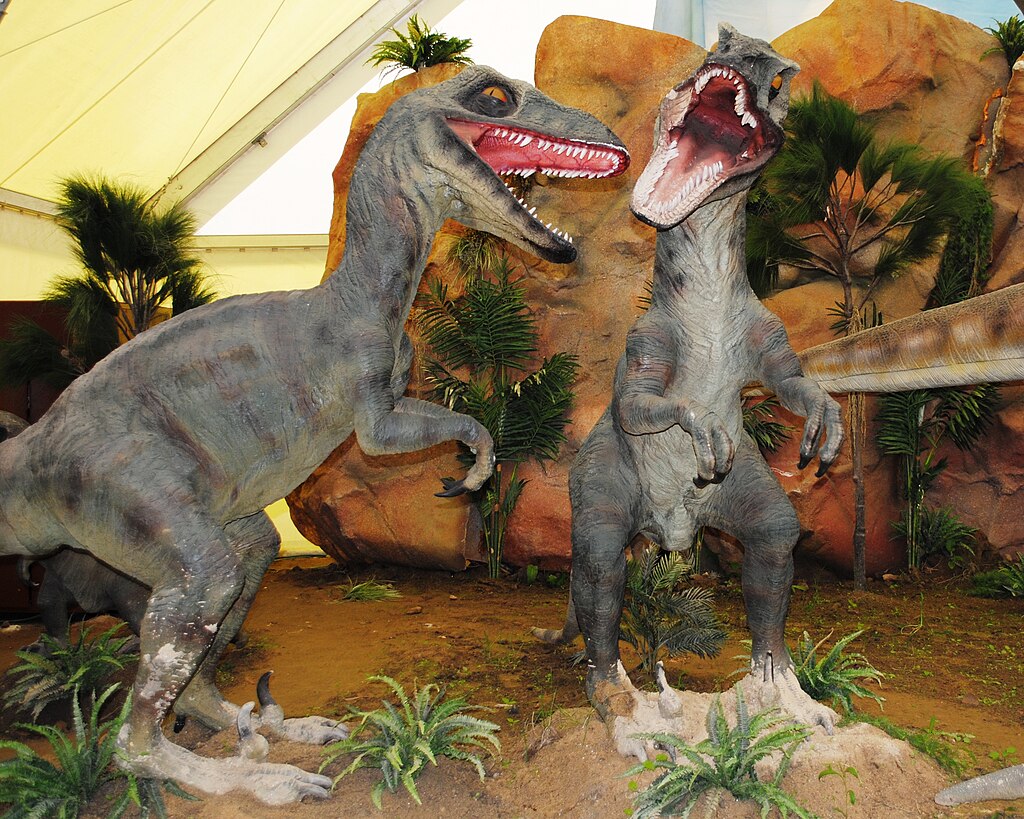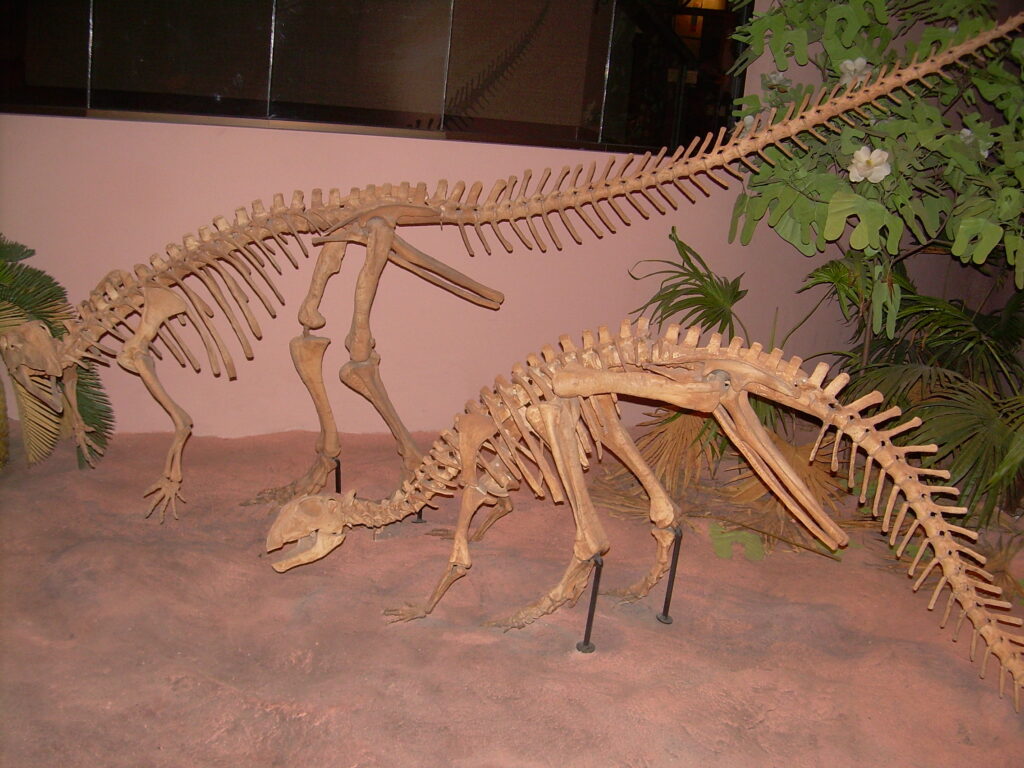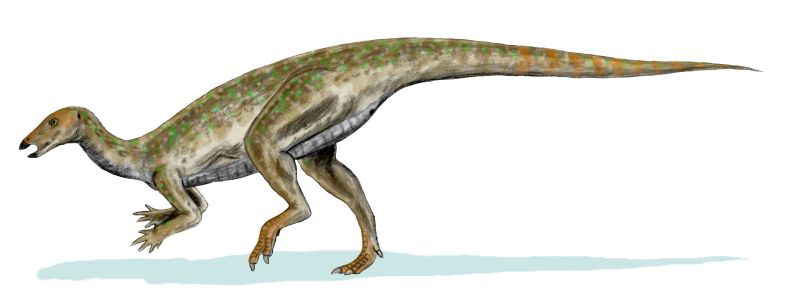From the thunderous roars of Tyrannosaurus rex in “Jurassic Park” to the haunting calls of Velociraptors, popular culture has shaped our perception of dinosaur vocalizations. However, these cinematic representations are largely based on creative liberty rather than scientific evidence. The truth is, paleontologists have long struggled to definitively determine what dinosaurs actually sounded like. Without audio recordings from 66+ million years ago, scientists must rely on fossil evidence, comparative anatomy, and evolutionary relationships to piece together this prehistoric soundscape. Let’s explore the fascinating theories and scientific approaches that help us imagine the calls that once echoed across ancient landscapes.
The Challenge of Reconstructing Prehistoric Sounds

Determining what dinosaurs sounded like presents unique challenges that paleontologists continue to grapple with today. Unlike bones, sound doesn’t fossilize, leaving scientists without direct evidence of dinosaur vocalizations. The soft tissues involved in sound production—including vocal cords, air sacs, and resonating chambers—rarely preserve in the fossil record. This fundamental obstacle has forced researchers to develop creative methodologies, combining evidence from fossilized structures, evolutionary relationships with modern animals, and biomechanical models.
Additionally, the incredible diversity among dinosaurs—from massive sauropods to small, bird-like theropods—suggests an equally diverse range of vocalizations that likely varied dramatically across different species, further complicating reconstruction efforts. Despite these hurdles, each new fossil discovery and technological advancement brings us closer to hearing echoes from the Mesozoic era.
Lessons from Living Relatives: The Avian Connection

Birds, as the only living dinosaur descendants, provide our most direct window into possible dinosaur vocalizations. The evolutionary relationship between birds and theropod dinosaurs has been firmly established through multiple lines of evidence, making modern bird sounds particularly relevant to understanding certain dinosaur groups.
Birds produce sounds using a specialized organ called the syrinx, which evolved from structures present in their dinosaur ancestors. Studies of bird vocalization mechanisms show remarkable diversity—from the deep booming of cassowaries to the complex songs of songbirds—suggesting dinosaurs may have possessed similarly varied vocal capabilities.
Paleontologists often study primitive birds like ostriches and emus, whose relatively simple vocalizations might more closely resemble those of their dinosaur ancestors. Research into the development and anatomy of the avian vocal system has become an essential component in theorizing about dinosaur sound production capabilities.
Crocodilian Clues: Insights from Another Archosaur Branch

Crocodilians—alligators, crocodiles, and their relatives—share a common ancestor with dinosaurs and constitute another important reference point for understanding dinosaur vocalizations. As fellow archosaurs (the group including birds, crocodilians, and extinct dinosaurs), crocodilians possess vocal structures that likely share evolutionary origins with those of dinosaurs.
Modern crocodilians produce a range of sounds, from low-frequency bellows to hisses and growls, using a larynx-based sound system rather than the syrinx found in birds. This distinction is significant because non-avian dinosaurs might have used anatomical structures more similar to crocodilian vocal equipment than avian syringes.
The deep, resonant bellows produced by adult crocodilians—created as air passes through their larynx and vibrates—could be particularly analogous to sounds made by larger dinosaur species. Studying how crocodilians modify their vocalizations across different sizes and ages has helped scientists develop scaling principles to estimate the acoustic properties of dinosaur calls.
Fossil Evidence: What Bones and Structures Tell Us

While soft tissues rarely survive in the fossil record, dinosaur remains still offer valuable clues about vocal capabilities. Certain dinosaur species possessed hollow crests and tubes that likely served as resonating chambers, potentially amplifying or modifying sounds. The hadrosaurs, or duck-billed dinosaurs, provide one of the most compelling examples with their elaborate cranial crests containing convoluted nasal passages. Parasaurolophus, with its dramatic backward-curving hollow crest measuring up to 6 feet long, has been particularly well-studied; computer models suggest these structures could have produced deep, trombone-like sounds when air passed through them.
Other fossil evidence includes the discovery of a fossilized syrinx from a Late Cretaceous bird, providing insight into the evolution of this sound-producing organ. The presence or absence of certain neck vertebrae and air sacs indicated in the skeletal structure can also help scientists determine whether a dinosaur might have had the anatomical features necessary for complex vocalizations. Each new fossil discovery potentially adds another piece to this acoustic puzzle.
The Biomechanics of Sound Production in Dinosaurs

Understanding the physical mechanics of how dinosaurs might have produced sounds involves sophisticated biomechanical analysis. Scientists create detailed computer models that simulate air movement through reconstructed vocal tracts based on fossil evidence and comparisons with modern animals. These models incorporate physics principles like acoustic resonance, air pressure dynamics, and the mechanical properties of soft tissues to predict possible sound production.
Size plays a crucial role in these calculations—larger dinosaurs would have naturally produced lower-frequency sounds due to the physical properties of sound production, similar to how a larger musical instrument produces deeper tones. Researchers also consider the energy requirements for vocalizations, as louder sounds demand more energy expenditure.
For massive dinosaurs like sauropods, producing very loud sounds would have been metabolically costly but potentially necessary for communication across great distances. These biomechanical approaches help establish the physical boundaries of what sounds were possible for different dinosaur groups.
Hadrosaur Honks: The Case of the “Duck-Billed” Dinosaurs

Hadrosaurs represent one of the most thoroughly studied dinosaur groups regarding potential sound production capabilities. These “duck-billed” dinosaurs possessed elaborate hollow crests with intricate internal nasal passages that varied significantly between species. Parasaurolophus, with its tubular crest extending far behind its skull, has been the subject of multiple acoustic studies.
Computer simulations based on CT scans of fossil skulls suggest these dinosaurs could have produced resonant, low-frequency sounds similar to those of brass instruments. The varied crest shapes among different hadrosaur species—from the hollow tubes of Parasaurolophus to the hatchet-shaped crests of Lambeosaurus—indicate these structures likely served as species recognition signals through their distinctive sounds.
Some researchers propose that hadrosaurs may have used these specialized structures for complex social communication, including mating calls, territorial warnings, or coordination within herds. The remarkable preservation of some hadrosaur specimens has even allowed scientists to create physical models replicating their nasal passages to test acoustic properties directly.
Theropod Vocalizations: From T. rex Roars to Raptor Calls

Theropod dinosaurs, including famous predators like Tyrannosaurus rex and dromaeosaurs (“raptors”), have captured the public imagination with their potential vocalizations. As the dinosaur group most closely related to birds, theropods likely possessed more sophisticated vocal capabilities than other dinosaur lineages. However, contrary to popular depictions, T. rex probably couldn’t produce the lion-like roars heard in movies.
Instead, research suggests larger theropods may have created deep, closed-mouth vocalizations similar to those produced by modern crocodilians or birds like cassowaries. Smaller theropods, particularly those most closely related to birds, might have had more bird-like calls, potentially including whistles, chirps, or hisses. The discovery of a partial syrinx in a Late Cretaceous bird has implications for understanding when this specialized vocal organ evolved in the theropod lineage.
Interestingly, some studies suggest velociraptors and their relatives may have been capable of making more subtle vocalizations than their cinematic counterparts, possibly using a combination of closed-mouth sounds and open-mouth calls for different social contexts.
Low-Frequency Giants: Sauropod Sound Theories

The enormous sauropods—long-necked dinosaurs like Brachiosaurus and Diplodocus—present unique considerations regarding vocalization capabilities. Their massive size suggests they would have produced exceptionally low-frequency sounds, possibly including infrasound below human hearing range (below 20 Hz). Modern elephants use similar low-frequency rumbles that can travel several miles across open terrain, making this a plausible communication strategy for these giants. The elongated necks of sauropods could have functioned as resonating chambers, potentially amplifying these low-frequency sounds.
Some paleontologists theorize that sauropods might have used their long necks to create sonic booms by rapidly displacing air, similar to how a whip creates a cracking sound. Sauropod neck vertebrae show evidence of extensive air sacs, which could have played a role in sound production or modification. While direct evidence remains limited, the communication needs of these herd-dwelling giants would have likely favored the evolution of effective long-distance vocalization methods.
Silent Dinosaurs: Could Some Species Have Been Vocal Minimalists?

Not all dinosaurs were necessarily vocal creatures, and some may have relied primarily on visual displays or other non-vocal communication methods. Many modern reptiles, including some crocodilians, communicate effectively with minimal vocalization, using body posture, head movements, and visual signals instead. Certain dinosaur groups show extensive evidence of visual display structures—such as the elaborate frills of ceratopsians like Triceratops or the sail-like structures of Spinosaurus—suggesting they may have emphasized visual communication.
Some paleontologists propose that more solitary dinosaur species might have had less need for vocal communication than social, herd-dwelling species. Environmental factors could also have influenced vocal tendencies; dinosaurs living in densely forested environments might have relied more heavily on vocal communication when visual signals were obstructed by vegetation. Without clear fossil evidence of vocal structures in certain groups, scientists must consider the possibility that some dinosaur lineages evolved along paths that favored visual or tactile communication over vocal methods.
Modern Technology: Digital Sound Reconstruction

Advances in technology have revolutionized how scientists approach the challenge of reconstructing dinosaur vocalizations. Computer modeling and simulation tools now allow researchers to create digital models of dinosaur vocal tracts based on fossil evidence and comparative anatomy. These models can then be used to simulate sound production using principles of physics and acoustics.
CT scanning technology enables detailed examination of fossil structures like the nasal passages in hadrosaur crests, revealing internal anatomy impossible to study through traditional methods. 3D printing has allowed researchers to create physical replicas of these structures for acoustic testing, literally breathing life into fossil evidence.
Digital signal processing techniques borrowed from fields like linguistics and audio engineering help analyze the acoustic properties of reconstructed sounds. Sophisticated audio software can then synthesize these sounds, creating scientifically informed approximations of dinosaur vocalizations that, while speculative, represent our best understanding of prehistoric acoustics.
Evolutionary Perspectives on Dinosaur Communication

Examining dinosaur vocalizations through an evolutionary lens provides valuable context for understanding how and why different sound production capabilities might have developed. Communication methods evolve in response to specific ecological pressures and needs, with factors like habitat, social structure, and predator-prey relationships driving the development of effective signaling systems.
Dinosaurs that lived in densely vegetated environments likely developed more sophisticated vocal communication than those in open terrain where visual signals could travel farther. Species that lived in complex social groups or herds would have benefited from varied vocalizations to coordinate group activities, warn of dangers, or establish social hierarchies. The evolution of dinosaur communication systems also likely reflects an evolutionary arms race between predator and prey species, with each developing more sophisticated methods of communication or stealth.
Understanding these evolutionary pressures helps scientists make informed predictions about which dinosaur groups were likely to invest biological resources in developing complex vocal capabilities versus those that might have relied more heavily on other communication methods.
Cultural Impact: How We Imagine Dinosaur Sounds

Our cultural perception of dinosaur sounds has been profoundly shaped by film, television, and other media representations, often with a limited scientific basis. The iconic Tyrannosaurus rex roar from “Jurassic Park” was created by combining tiger, alligator, and elephant sounds—an artistic choice rather than a scientific reconstruction. These fictional portrayals have deeply influenced public imagination, creating expectations that may be at odds with scientific findings.
Interestingly, as scientific understanding has evolved, some media representations have adapted; more recent dinosaur documentaries and films sometimes incorporate current theories about dinosaur vocalizations, including bird-like calls for certain species. The gap between popular perception and scientific understanding highlights the challenge science communicators face in conveying complex, uncertain topics to the public.
Despite these challenges, public fascination with dinosaur sounds has positively impacted paleontology by generating interest in the field and sometimes driving funding for research projects exploring these questions. The cultural imagination surrounding dinosaur vocalizations thus exists in a feedback loop with scientific research, each influencing the other in an ongoing dialogue about these mysterious prehistoric sounds.
Future Research Directions: What We Still Hope to Learn

The quest to understand dinosaur vocalizations continues to evolve with new research approaches and technological innovations. Future advances may come from unexpected fields, such as machine learning algorithms that could analyze patterns across modern species to predict dinosaur vocal capabilities with greater precision. Improved CT scanning technology with higher resolution might reveal previously undetectable structures in fossilized skulls related to sound production.
New fossil discoveries, particularly those preserving rare soft tissue impressions or exceptional three-dimensional preservation of throat regions, could provide breakthrough evidence about vocal structures. Biomechanical studies incorporating fluid dynamics may offer more sophisticated models of air movement through reconstructed dinosaur vocal tracts.
Some researchers are exploring the possibility of using genetic studies of vocal development in birds and crocodilians to better understand the evolutionary pathway of sound production in archosaurs. While we may never know exactly what dinosaurs sounded like, the interdisciplinary approach combining paleontology, comparative anatomy, acoustics, and evolutionary biology continues to narrow the range of possibilities, bringing us closer to hearing echoes from the distant past.
Conclusion

While definitive answers about dinosaur vocalizations remain elusive, scientific approaches have provided increasingly refined theories about these prehistoric sounds. The combination of fossil evidence, comparative anatomy with birds and crocodilians, biomechanical modeling, and evolutionary context continues to expand our understanding. From the resonant chambers of hadrosaur crests to the potential infrasound rumbles of massive sauropods, each dinosaur group likely possessed unique vocal signatures shaped by their anatomy, ecology, and social needs.
Though we may never experience the true soundscape of the Mesozoic era, ongoing research continues to bring us closer to understanding this fascinating aspect of dinosaur biology. As technology advances and new fossils are discovered, our ability to reconstruct these ancient calls will only improve, allowing us to better imagine the voices that once echoed across prehistoric landscapes.




